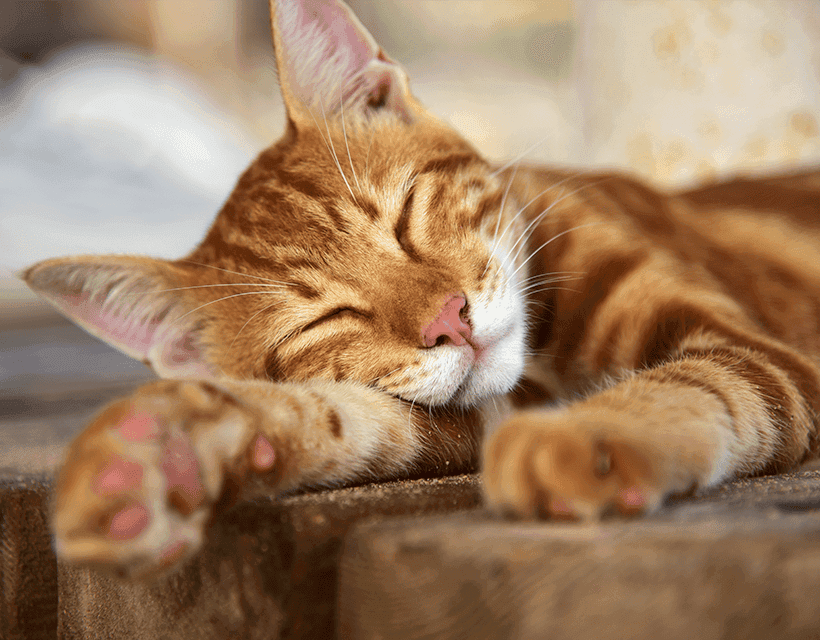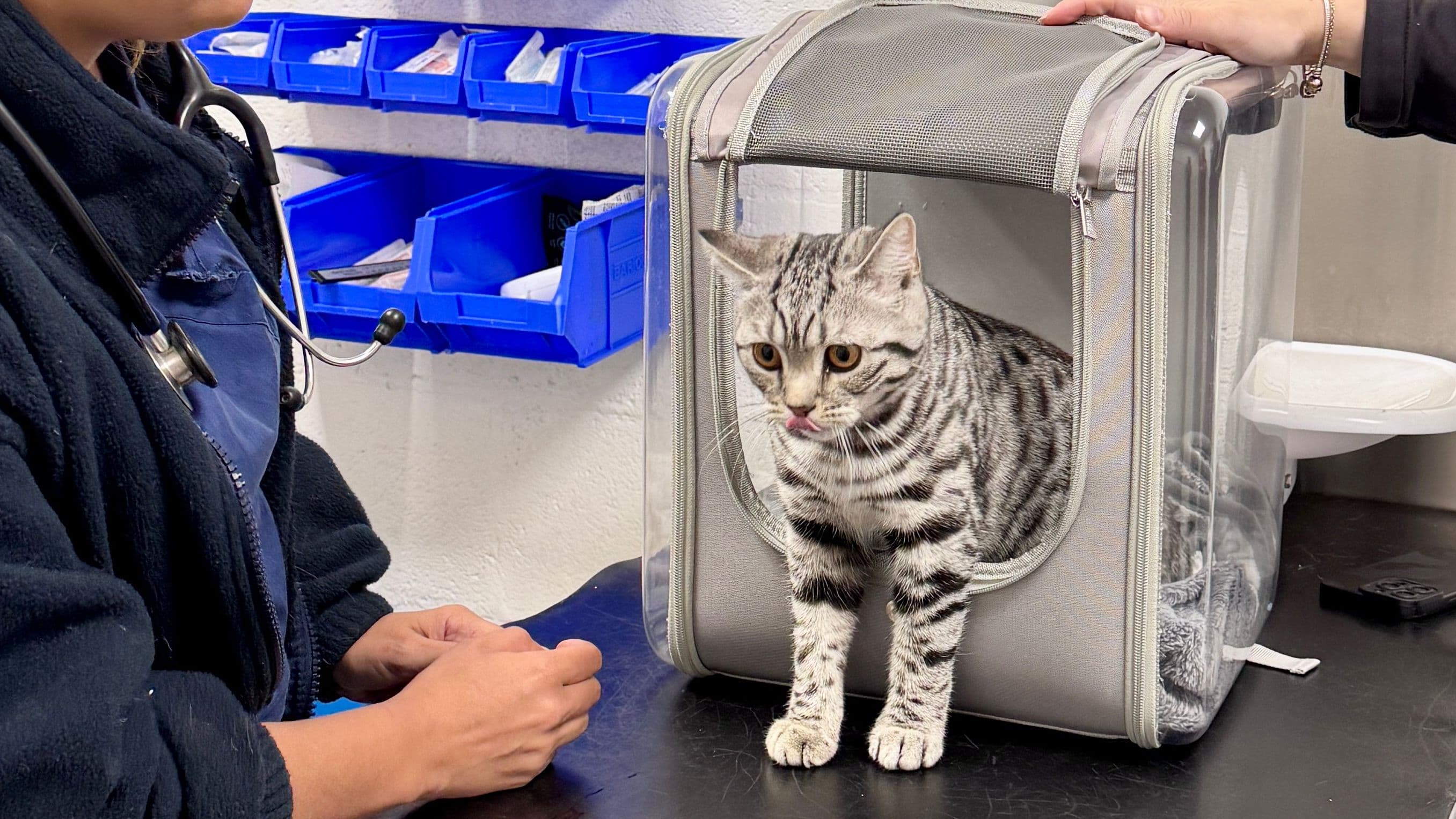Protecting Your Cat from Heatstroke
While we enjoy better weather, higher temperatures can be dangerous for our pets if we don’t care for them when it is warm. Heatstroke is a very serious condition. Normal body temperature for a cat ranges between 38.2-39.2°C (100.5-102.5°F), which can rise a little if the cat is unwell and has a fever. If your cat has a high body temperature that goes above 40°C (104°F), they are at risk of heatstroke, which can cause seizures, organ damage, and even death.
The most common situation that leads to cats suffering from heatstroke is getting trapped somewhere with poor ventilation, such as a shed, greenhouse, or garage. Cats are not always able to sweat sufficiently to cool themselves down. They will usually seek out shade and lick themselves to control their temperature. However, as they also tend to find somewhere warm and cosy to sleep at night, they can end up somewhere too warm, especially on a hot day.
A cat is unlikely to suffer heatstroke due to too much exercise. Should your cat show any signs of heatstroke, it is essential to start first aid immediately. The quicker your cat is cooled down and treated by a vet, the better its chance of fully recovering.


Heatstroke in brachycephalic (flat-faced) cats
Certain breeds and types of cats are more susceptible to the heat, such as brachycephalic (flat-faced) breeds, such as Persians, and those with long or thick coats, such as Rag Dolls. Elderly, kittens, and obese cats are also vulnerable, so take extra care to ensure they are somewhere cool and comfortable.
Some health conditions that affect the heart or lungs will also make the patient vulnerable to heatstroke, so it may be better to keep them indoors in a cool, well-ventilated room with access to fresh, cool water.
Common symptoms of heatstroke in cats
These are some of the more common signs of heatstroke in cats. If you suspect heatstroke, begin first aid and contact your vet as soon as possible.

First aid for heatstroke in cats
If you suspect your cat is showing signs of heatstroke, acting quickly and remaining calm is important. Remember, the most effective first aid for heatstroke is to cool your dog down. Following these steps can significantly increase your cat's chances of recovery.
If your cat is outdoors, move it indoors to a cool room or into the shade. Gently and slowly pour cold tap water over their entire body; cats don’t like being wet, so be very gentle. Keep the water away from their nose and mouth to prevent them from inhaling the water. Once they are wet, create a breeze by opening your doors and windows or use a fan if you have one. Letting them lie on a cold, wet towel or a cool mat is also a good idea.
Offer your cat cold water, but don’t force it to drink; offer clean, fresh water and let it drink when it wants to. Now, wrap some ice or frozen vegetables in a towel and place them between your cat’s legs or under the wet towel. Don’t cuddle, stroke, or cover them with a wet towel; this will prevent them from cooling down.
Call your vet as soon as possible
Once you have completed your first aid, it is essential that you go to your nearest vet. Contact them to let them know you have a cat with suspected heatstroke, so they are ready to see your pet as soon as you arrive. As speed is essential, travel to the vet by car, ideally with air conditioning, but at the very least, open all the windows, ensuring they are not able to escape, and, if possible, take someone with you who can continue the first aid cooling treatment on route.

How will the vet treat my cat’s heatstroke?
Your vet will focus on reducing your cat’s temperature as quickly as possible, using water, fans, and, if necessary, a fluid drip. If your cat is so hot that it is struggling to breathe, experiencing seizures, or losing consciousness, it may also need oxygen, medication, or anaesthesia. Severe heatstroke can cause other problems that aren’t visible, such as problems with blood clotting and damage to internal organs. If the vet believes your cat is showing signs of severe heatstroke, they may need to run some tests to check how their internal organs are working properly. In these circumstances, your cat may need to stay in the hospital for a while to be monitored and given medication to prevent further damage.
Once your pet has recovered, you will be able to take it home, but you will still need to monitor it for up to 48 hours and watch for signs of illness, such as vomiting, diarrhoea, confusion, unsteadiness, and lack of appetite or increased thirst. Your vet will probably want to see your cat again to run some blood tests to confirm that it has fully recovered.
Health outlook for your cat after heatstroke
If your cat suffered mild heatstroke and was cooled down very quickly, it is unlikely to have any lasting problems and will probably fully recover. If, however, it had severe heatstroke and, as a result, has some organ damage or the treatment was delayed, then they are much less likely to recover.
Tips to prevent heatstroke in cats
Here are some simple tips on how you can prevent your cat from becoming unwell with heatstroke
Always provide them with access to shade and cool water.
Never leave them in a car, even on a cool day. A car can heat up very quickly in the sun.
Avoid travelling with them when it’s hot. If unavoidable, ensure your car is cool and well-ventilated, either with air conditioning or open windows.
Maintain a healthy weight. An overweight cat will find it harder to cool down in hot weather.
Never leave them in a hot room or a room that will heat up later in the day if they cannot move elsewhere.
Always check conservatories, sheds, garages and greenhouses before you close the doors and windows in case your cat has sneaked in.
